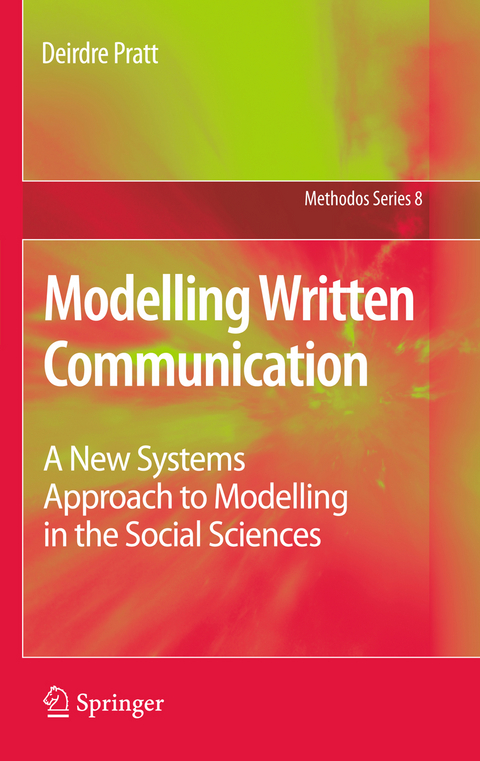
Modelling Written Communication
A New Systems Approach to Modelling in the Social Sciences
Seiten
2013
Springer (Verlag)
978-94-007-3506-4 (ISBN)
Springer (Verlag)
978-94-007-3506-4 (ISBN)
It takes a critical realist stance to arrive at the “essence” of written communication with the aim of informing a practical application: a computerised writing tutor. The algorithm provided the design template for a writing tutor program which models for the learner both the systemic and the socially situated nature of writing.
This book offers an alternative view to current postmodern approaches to composition. It takes a critical realist stance to arrive at the “essence” of written communication with the aim of informing a practical application: a computerised writing tutor. Following Robert Franck’s seminal work on modelling, a theoretical model of writing was first formulated, consisting of an architecture of functions which constitute the prerequisites for effective communication. Next, an applied model - a composing algorithm with an input option - was developed, showing composing to be a systemic social process with intra- and extra-systemic variation. The algorithm provided the design template for a writing tutor program which models for the learner both the systemic and the socially situated nature of writing. This book establishes composing as a communicative interaction, and shows the essential dynamism of writing, while offering an exemplar of a systems approach to modelling in the social sciences.
This book offers an alternative view to current postmodern approaches to composition. It takes a critical realist stance to arrive at the “essence” of written communication with the aim of informing a practical application: a computerised writing tutor. Following Robert Franck’s seminal work on modelling, a theoretical model of writing was first formulated, consisting of an architecture of functions which constitute the prerequisites for effective communication. Next, an applied model - a composing algorithm with an input option - was developed, showing composing to be a systemic social process with intra- and extra-systemic variation. The algorithm provided the design template for a writing tutor program which models for the learner both the systemic and the socially situated nature of writing. This book establishes composing as a communicative interaction, and shows the essential dynamism of writing, while offering an exemplar of a systems approach to modelling in the social sciences.
Preface.- Glossary.- Introduction.- Chapter 1: Review of Composition Software.- Chapter 2: Critical Realism.- Chapter 3: The Modelling Process.- Chapter 4: The User's Model of Composing.- Chapter 5: Testing out the User's Model.- Chapter 6: The Theoretical Model of Composing.- Chapter 7: The Explanatory Force of the Models.- Chapter 8: The Writing Tutor Program.- Conclusion.- Index.- Bibiography.
| Reihe/Serie | Methodos Series ; 8 |
|---|---|
| Zusatzinfo | XXVI, 226 p. |
| Verlagsort | Dordrecht |
| Sprache | englisch |
| Maße | 155 x 235 mm |
| Themenwelt | Geisteswissenschaften ► Geschichte |
| Geisteswissenschaften ► Sprach- / Literaturwissenschaft ► Sprachwissenschaft | |
| Informatik ► Office Programme ► Outlook | |
| Sozialwissenschaften ► Soziologie ► Empirische Sozialforschung | |
| Schlagworte | Algorithmic structure • Applied model of writing • Communicative functions • effective communication • Idiosyncratic nature • Robert Franck |
| ISBN-10 | 94-007-3506-5 / 9400735065 |
| ISBN-13 | 978-94-007-3506-4 / 9789400735064 |
| Zustand | Neuware |
| Haben Sie eine Frage zum Produkt? |
Mehr entdecken
aus dem Bereich
aus dem Bereich
Buch | Softcover (2022)
Markt + Technik Verlag
CHF 20,90
Band 1: Grundlagen des digitalen Zeitalters
Buch | Softcover (2024)
Springer Gabler (Verlag)
CHF 69,95


